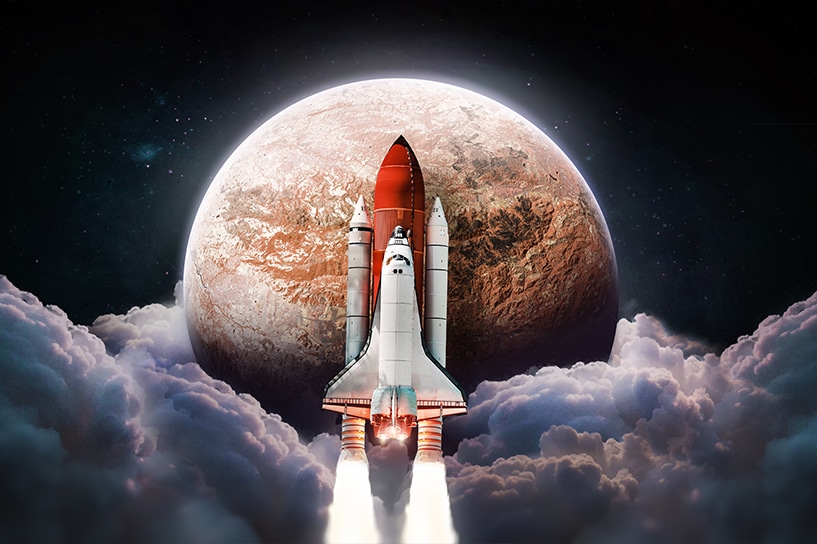Introduction
In the annals of human history, some moments shine as beacons of achievement, inspiring generations to dream and explore beyond the boundaries of Earth. The first landing on the moon’s south pole is a remarkable milestone that united humanity in celebration and innovation. This article takes you through this historic feat’s significance, challenges, and scientific marvels.
Celebrating the First Landing on the Moon’s South Pole(Chandrayaan-3)
In 2023, the world collectively celebrated a monumental achievement – the first successful landing on the moon’s south pole. This extraordinary event culminated years of meticulous planning, cutting-edge technology, and international collaboration. The moon’s south pole, a region of immense scientific interest, had remained unexplored until this meaningful mission.
The Significance of Lunar South Pole Exploration
Unveiling Lunar History
Exploring the moon’s south pole provides scientists with an exceptional chance to discover the mysteries of the moon’s formation and evolution. The lunar surface here is relatively untouched, preserving crucial information about the early solar system.
Prospects for Future Space Exploration
The successful landing on the moon’s south pole paved the way for future missions deeper into space. The knowledge gained from this mission’s challenges and accomplishments will be invaluable in planning manned missions to more distant celestial bodies, such as Mars.
Sustainable Energy Resources
One of the most exciting aspects of lunar south pole exploration is the potential for harvesting valuable resources, such as water ice. Water is essential for future lunar missions, and hydrogen and oxygen can be produced from it – crucial components for rocket fuel.
Overcoming Extraordinary Challenges
Harsh Lunar Environment
The moon’s south pole poses formidable challenges, including extreme temperatures, low gravity, and rough terrain. Engineers and scientists had to design innovative solutions to ensure the spacecraft’s survival and efficient functioning.
Precision Landing
Achieving a precise landing on the moon’s south pole is akin to hitting a bullseye from thousands of kilometres away. Engineers used cutting-edge navigation and guidance systems to ensure the spacecraft’s safe touchdown.
Communication and Remote Operations
Maintaining communication with a spacecraft positioned at the moon’s south pole required the establishment of advanced communication networks. Remote operations and real-time decision-making were essential due to the communication delay.
Scientific Breakthroughs and Discoveries
Lunar Geology
The moon’s south pole is a treasure trove of geological wonders. The data collected from this mission will shed light on the moon’s geological history, including volcanic activity, impact cratering, and the potential presence of ancient lunar volcanoes.
Water Ice Confirmation
One of the mission’s primary objectives was to confirm the presence of water ice in the areas near the lunar south pole that are always in shadow. The discovery of water ice holds immense implications for future lunar colonisation and deep space exploration.
Astrophysical Observations
The lack of atmosphere at the moon’s south pole provides a clear view of the cosmos. Scientists utilised this advantage to conduct astrophysical observations, contributing to our understanding of the universe beyond Earth.
FAQs:
Q: How long did planning the mission to the moon’s south pole take?
A: The planning for the mission took several years, involving collaboration between multiple space agencies and organisations.
Q: What are the potential uses of water ice found on the moon?
A: Water ice can be converted into breathable oxygen and hydrogen fuel, essential for sustaining human presence on the moon and enabling deep space exploration.
Q: How does the moon’s south pole exploration impact our understanding of Earth’s history?
A: Studying the moon’s geological history provides insights into the early history of our solar system, potentially offering parallels to Earth’s formation.
Q: What were the significant risks of landing on the moon’s south pole?
A: The risks included extreme temperatures, challenging terrain, and communication delays due to the distant location.
Q: Can the technology developed for this mission be used for other space exploration endeavours?
A: Absolutely; the innovations and technologies developed for this mission have broader applications in space exploration and scientific research.
Q: What’s next after this successful moon landing?
A: The success of the moon’s south pole landing sets the stage for more ambitious space missions, including lunar habitats and eventual human exploration of Mars.
Conclusion
Celebrating the first landing on the moon’s south pole marks a triumphant moment in human history. It represents our indomitable spirit of exploration, our ability to overcome challenges, and our insatiable curiosity to unlock the secrets of the cosmos. As we look to the future, the insights gained from this mission will continue to shape our understanding of space and our place within it.





